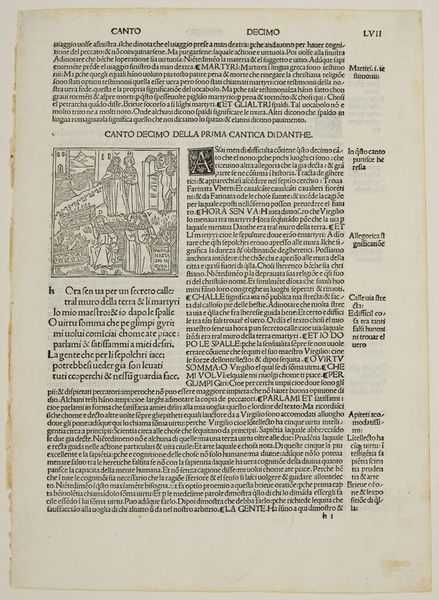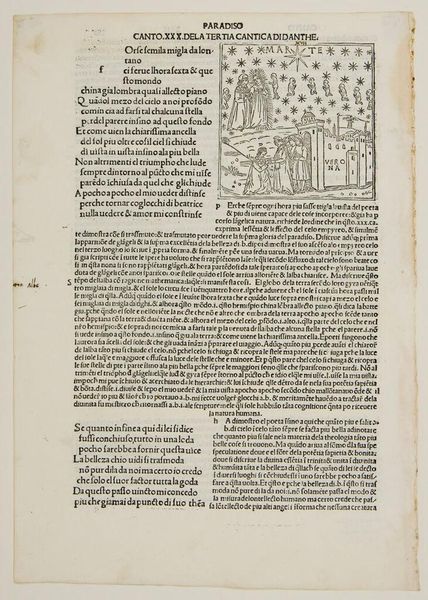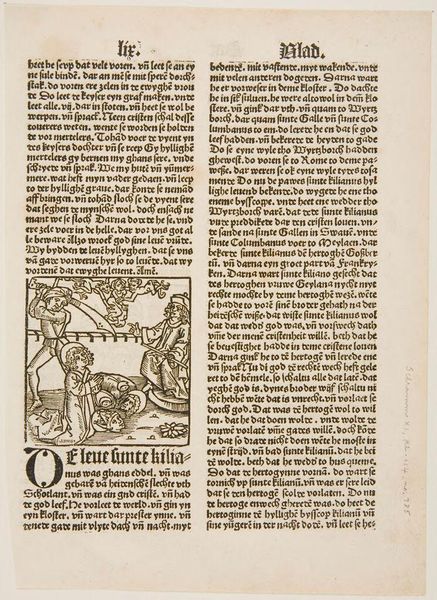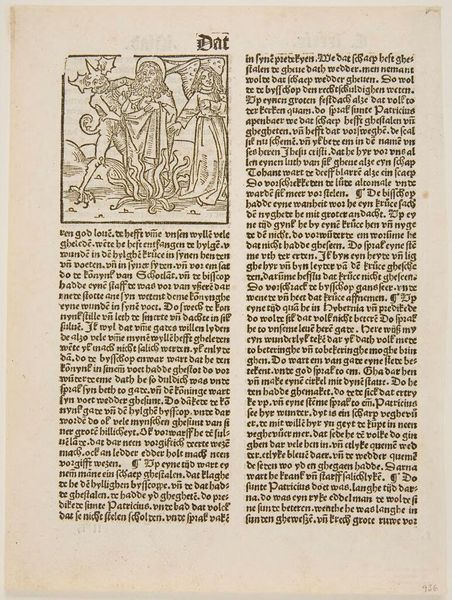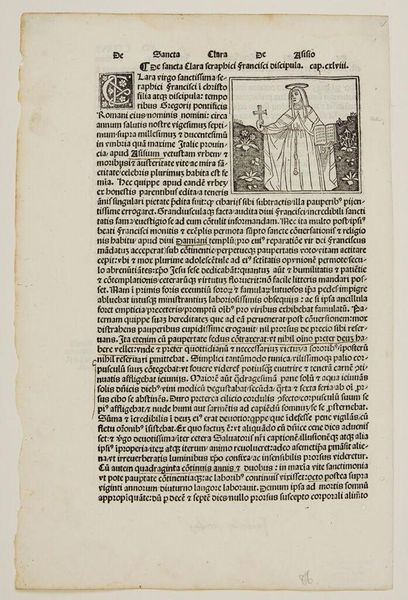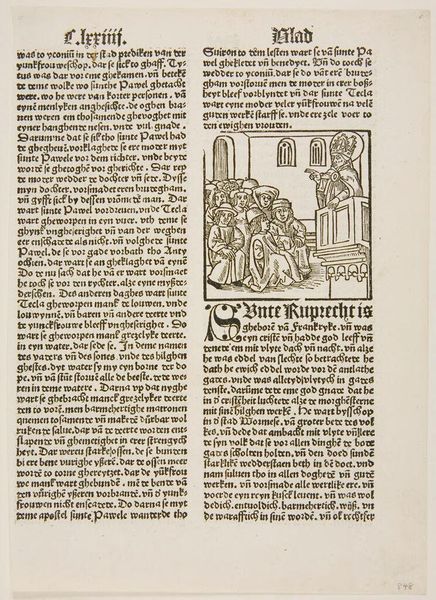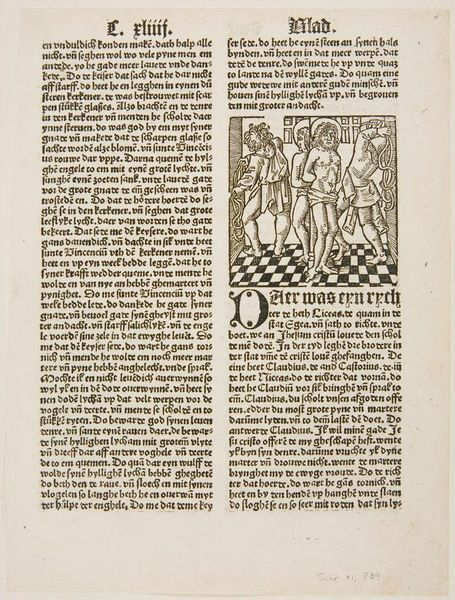
Copyright: CC0 1.0
Curator: Here we have an intriguing woodcut, titled "Saint Ignatius." Though the artist remains anonymous, we know it resides here at the Harvard Art Museums. Editor: It strikes me as so stark and textual. The image is almost swallowed by the surrounding script. There's a figure in a bed, but everything is so densely packed. Curator: Indeed. The historical context here is key. Given the era and the emphasis on text, it's plausible that the woodcut functioned as an element within a larger published work, perhaps a biography. The composition reflects the socio-cultural emphasis on literacy and religious instruction. Editor: I see what you mean. It's less about artistic expression, more about information dissemination. Still, I can't help but wonder about the figure himself. He seems so...resigned, almost melancholic. Is he ill? Praying? Reflecting? Curator: Without definitive historical records, much is left to interpretation. We can surmise the artist sought to convey Saint Ignatius’s piety, his devotion, within the conventions of the time. The bed could symbolize humility, or a moment of profound revelation. Editor: A quiet devotion amidst a world of words. It's fascinating how much can be packed into such a small image. Curator: It is, isn’t it? A potent reminder of how art serves not just as aesthetic object, but also as a conduit for cultural values.
Comments
No comments
Be the first to comment and join the conversation on the ultimate creative platform.


